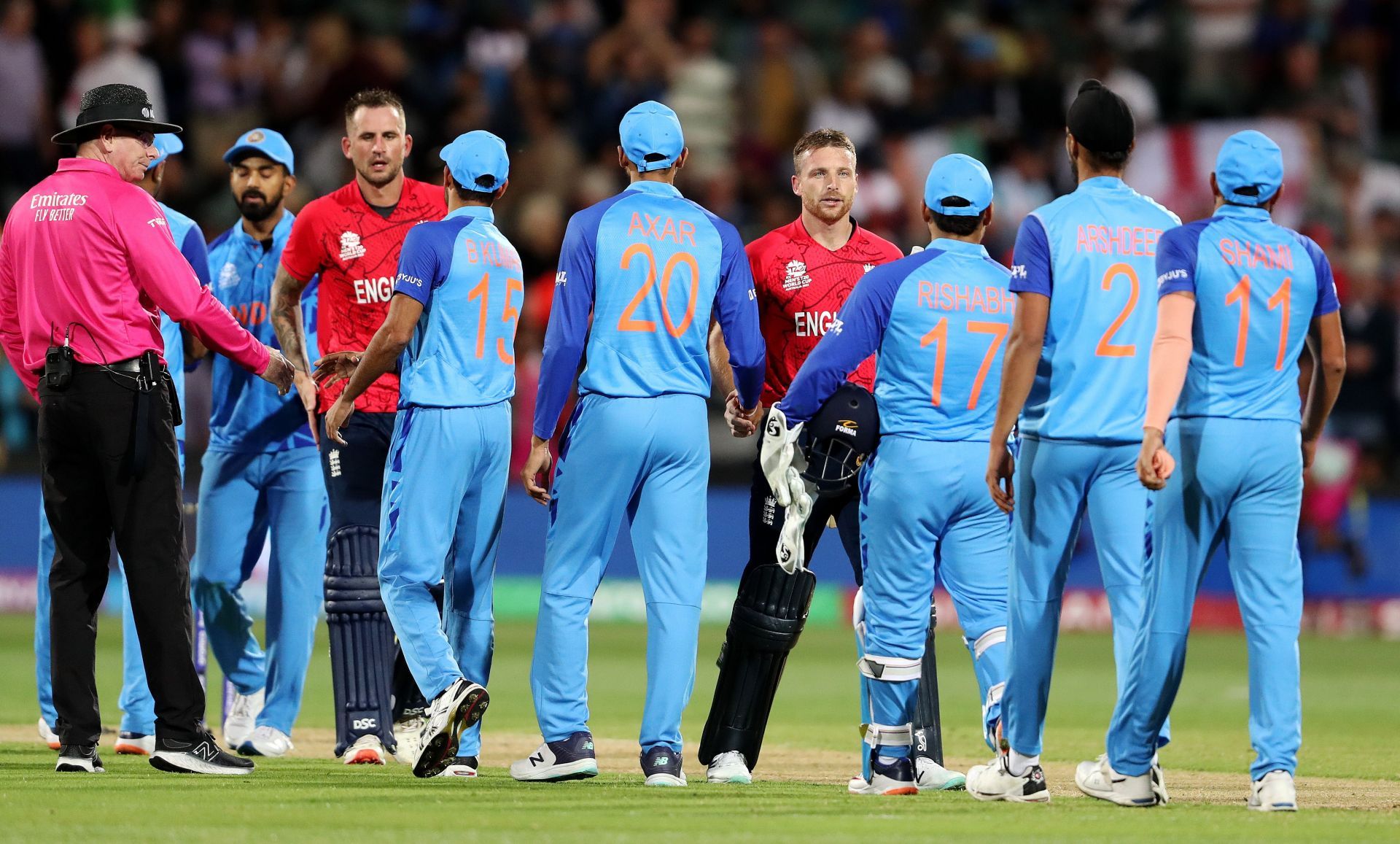
T20 World Cup 2022: 3 issues India need to address going forward in T20Is
India's wait for a second ICC Men's T20 World Cup title has been prolonged by at least a couple of years. The Men in Blue received a thumping 10-wicket defeat at the hands of England in the second semi-final of the ongoing edition at the Adelaide Oval on Thursday, November 10.
Asked to bat first, Rohit Sharma and Co. stuttered and stumbled along before a Hardik Pandya blitz powered them towards the end. His 33-ball 63, along with Virat Kohli's 40-ball 50, saw India post 168/6 in their 20 overs.
In response, Alex Hales (86* off 47) and skipper Jos Buttler (80* off 49) came out all guns blazing. The duo plundered every bowler in sight and razed down the target unscathed with four overs to spare to set up a date with Pakistan in the final of the T20 World Cup in Melbourne.
With India faltering in yet another knockout encounter, question marks are bound to prevail over what the team can change going forward.
We look at three issues that the team must address in the shortest format on the backdrop of their semi-final exit.
#1 The prevailing conservative approach
Since India's Super 12 elimination at the T20 World Cup last year, the team management has preached a more positive and cavalier approach to the format, particularly with the bat. While it was there to be seen despite an early exit at the Asia Cup as well, it went amiss at this year's T20 World Cup.
The problem started at the top with KL Rahul and Rohit getting bogged down by the moving ball. Failing to put a rusty Shaheen Shah Afridi away against Pakistan indicated the tentativeness that carried over in the games to follow. So much so that the highest powerplay score India managed at this T20 World Cup was 46/1 against Zimbabwe, which included a maiden over in that phase.
Clearly, the big occasion seems to have come in the way of the approach that was preached. T20 is a high-risk, high-reward format with a catch - there is little to no reward for a low-risk approach irrespective of how big the stakes are.
Taking a cue from England's dominance is key to India's success going forward and this is an issue they must address sooner rather than later.
#2 Lack of flexibility and multiskilled players
The team England fielded for the semi-final against India was blessed with as many as seven bowling options coupled with enviable batting depth. So much so, that skipper Buttler cited their depth as a big factor behind going hard at the top.
While batting depth shouldn't come at the cost of fielding one's best bowling unit, the fact that the Indian XI has worn a threadbare look in times gone by as far as depth is concerned, and it is tough to argue against. This extends to both the batting and bowling departments and in the absence of the injured Ravindra Jadeja, the issues resurfaced during the T20 World Cup.
Whether it's a change of personnel or the incumbent ones adding a new string to their bow, this is an issue that requires a quick solution as far as the Men in Blue are concerned.
#3 Agile fielders
There was always a huge question mark over India's fielding ahead of the T20 World Cup. Jadeja and Kohli remaining India's best bets on the park despite heading into what is the last leg of their careers is an ominous sign.
Mind you, the likes of Rahul, Pandya, and Suryakumar Yadav are brilliant fielders in their own right. Yet, this is a department that has turned into an Achilles heel for the Men in Blue over time and needs quick addressing.
Every run saved is worth its weight in gold with the T20 format accompanied by minimal error margins. Needless to say, their fielding needs to see a big upswing in time to come.
What do you think was the biggest factor that pulled the Men in Blue back at the T20 World Cup? Let us know in the comment section below!
Also Read: IND vs ENG 2022: "England making India's bowling attack look like a Sydney Grade team" - Former cricketers take a dig at Men in Blue after 10-wicket drubbing in 2nd semi-final


